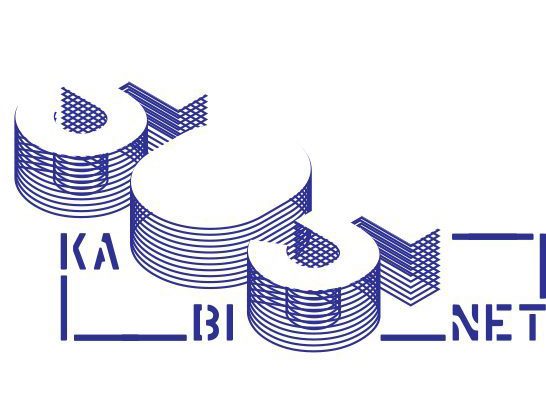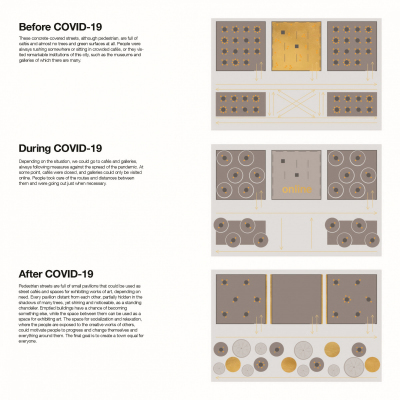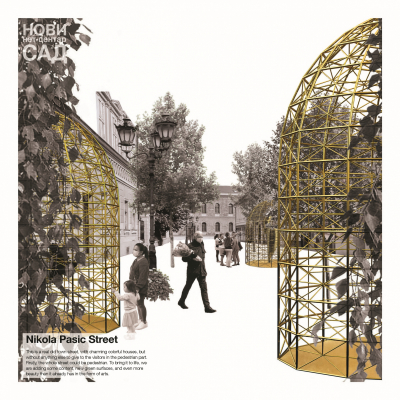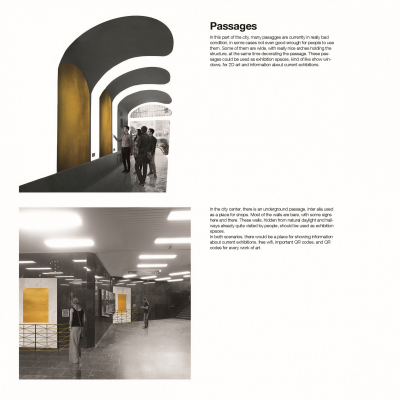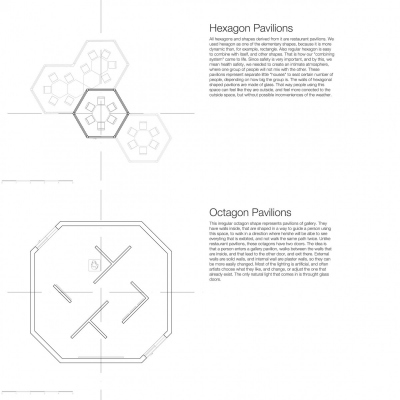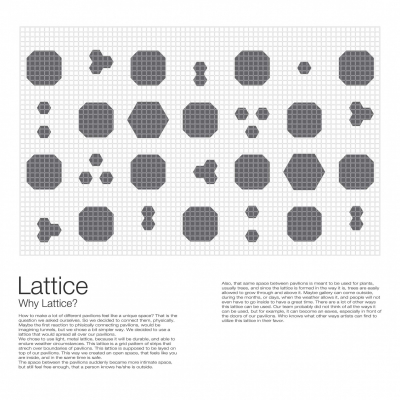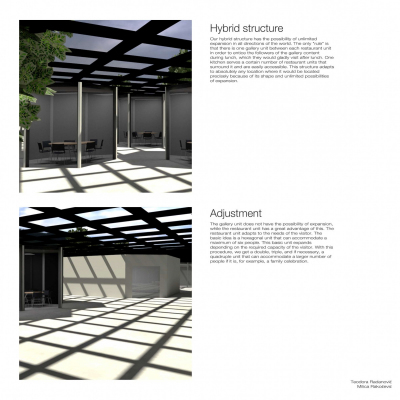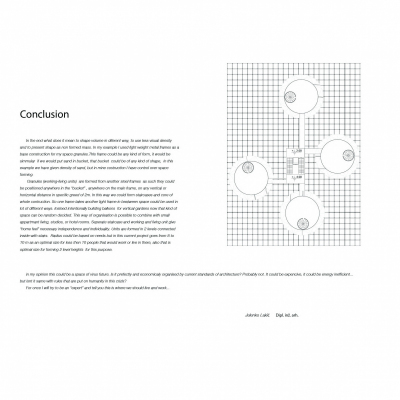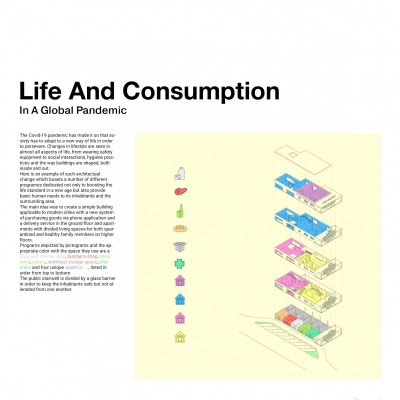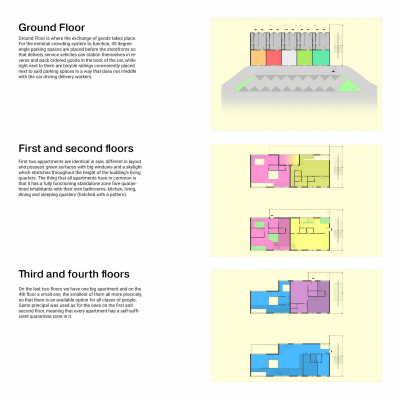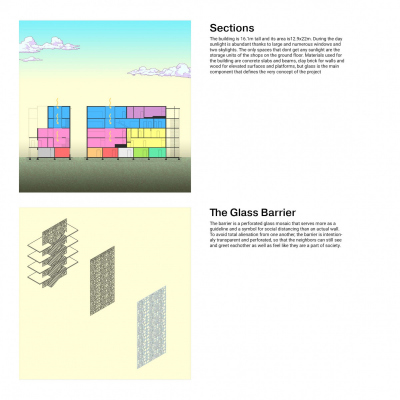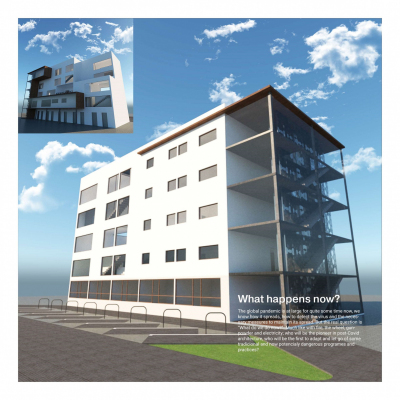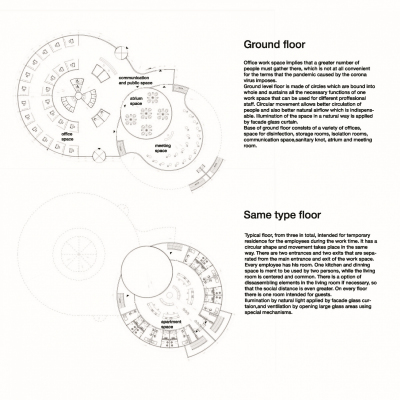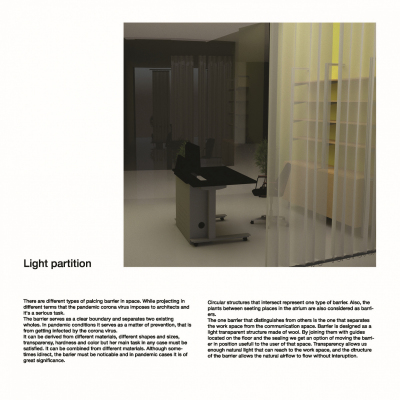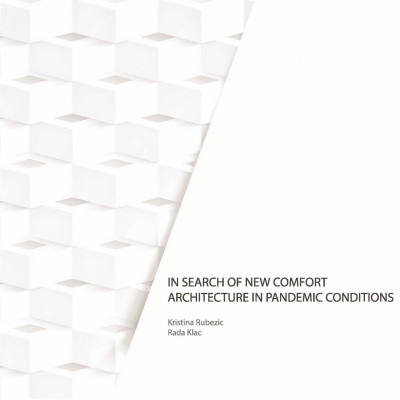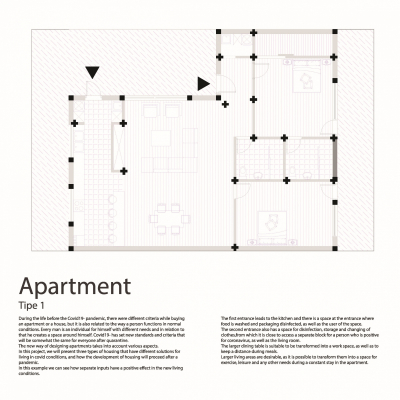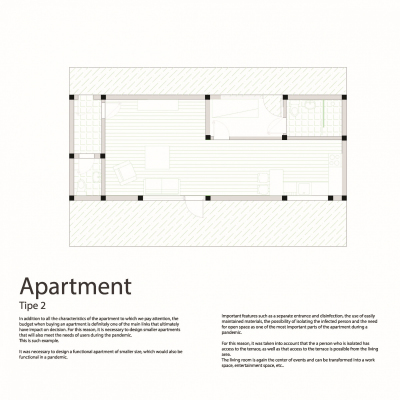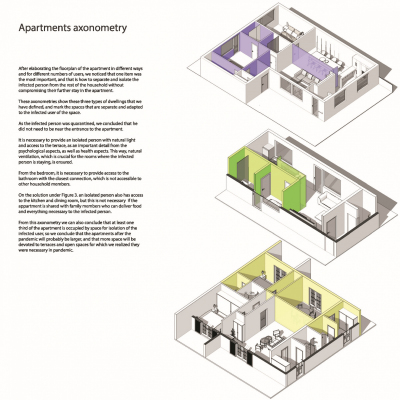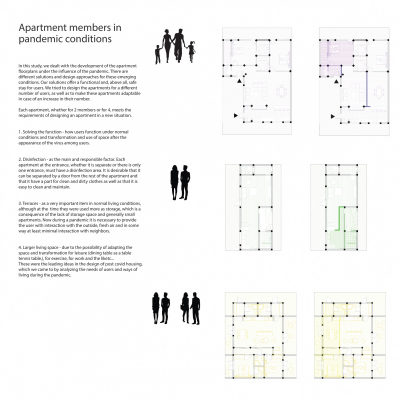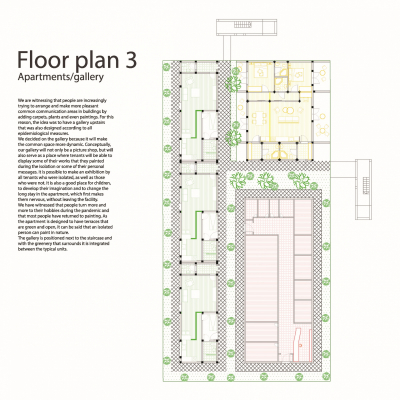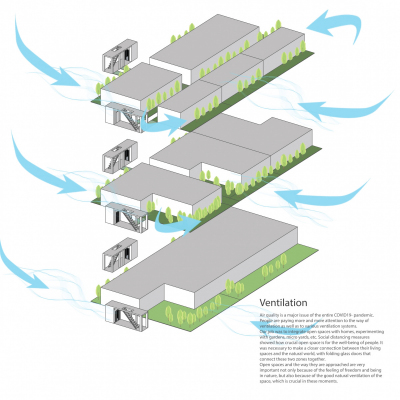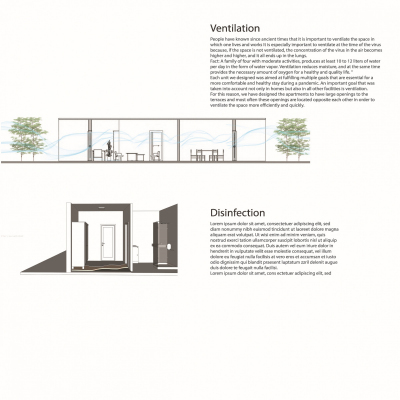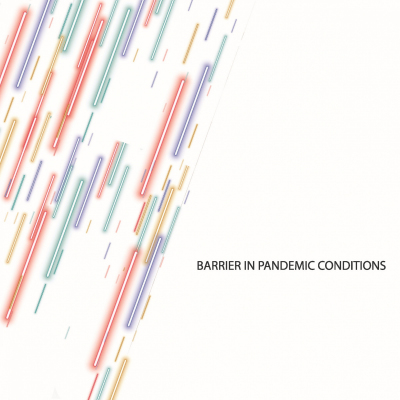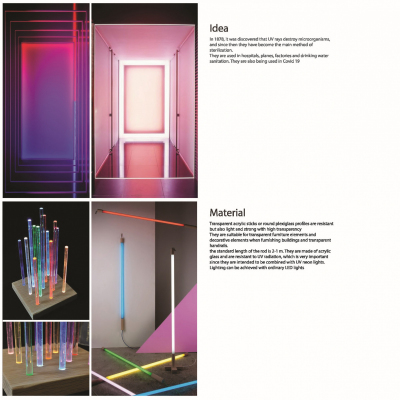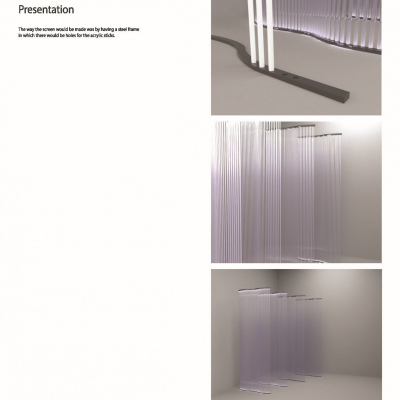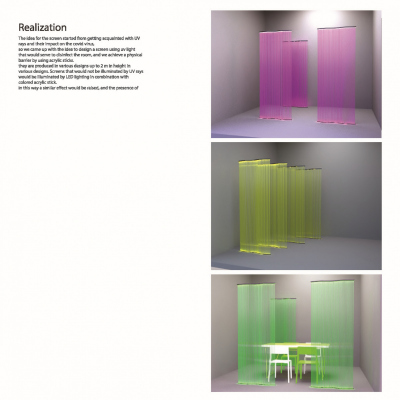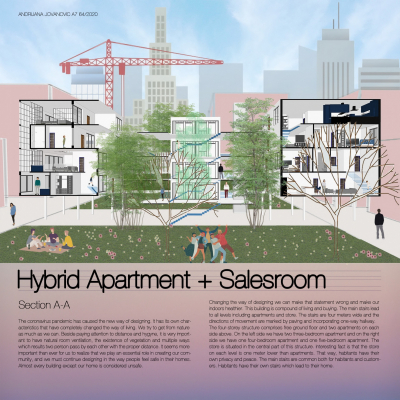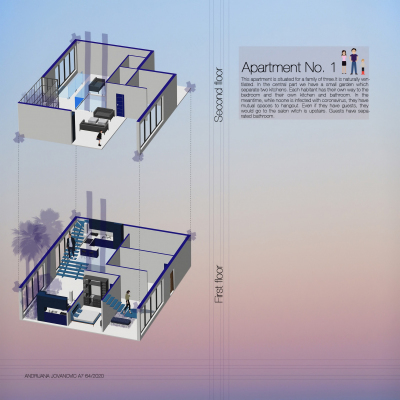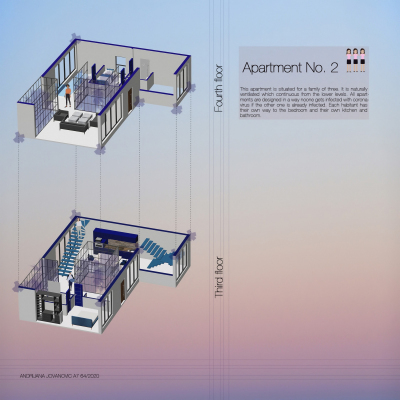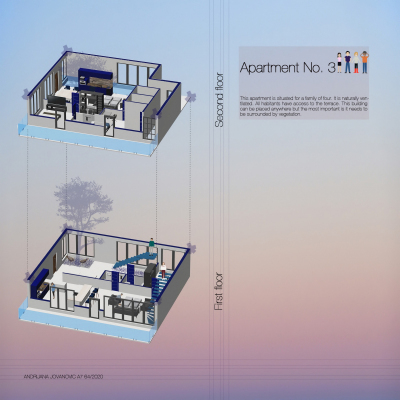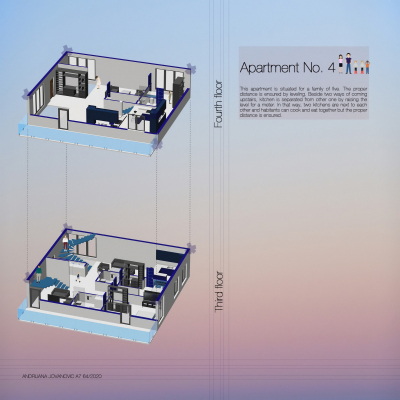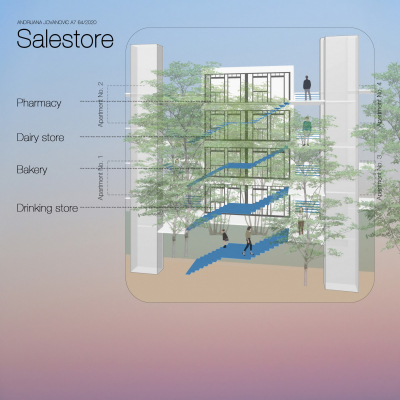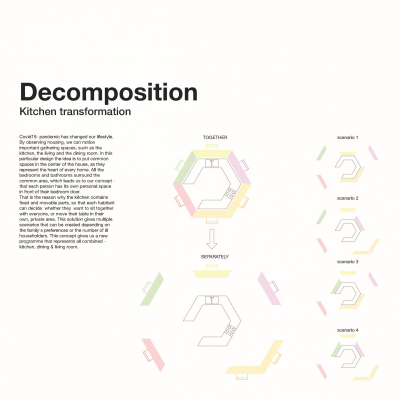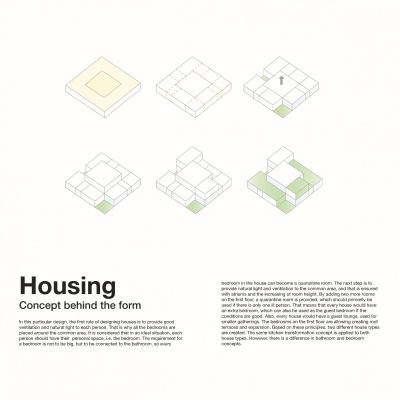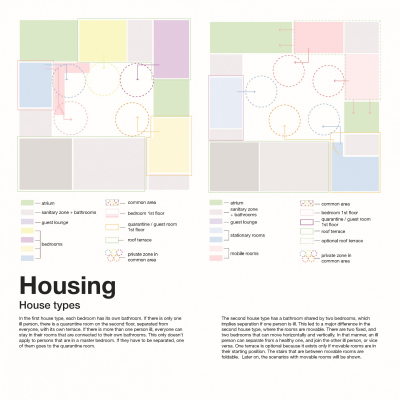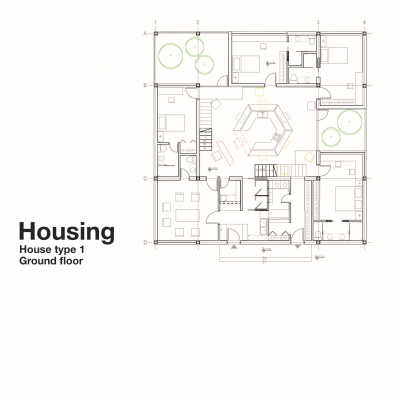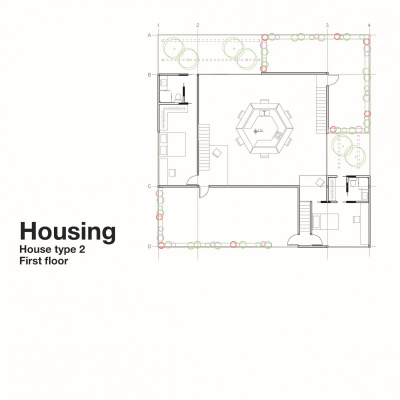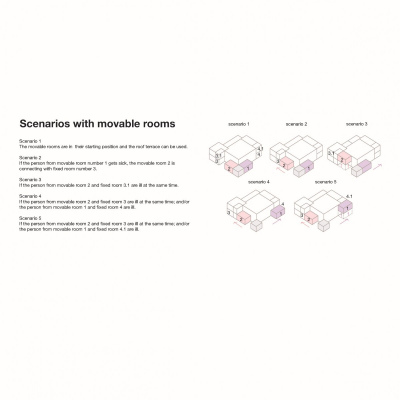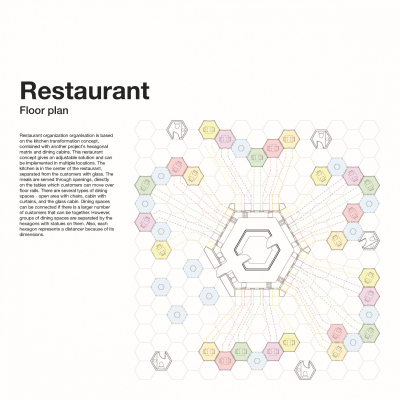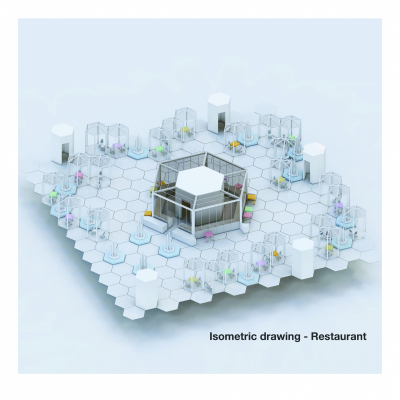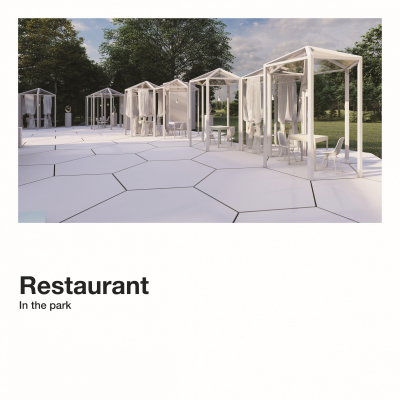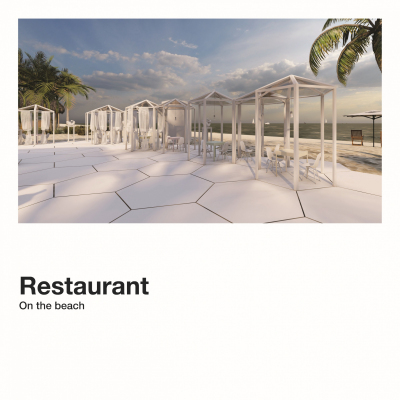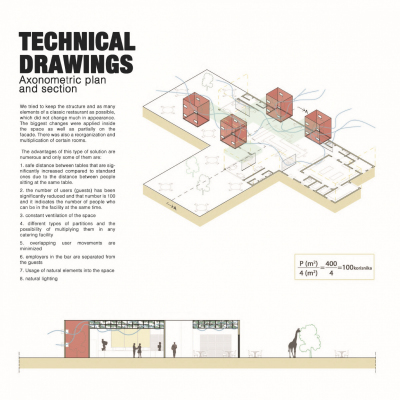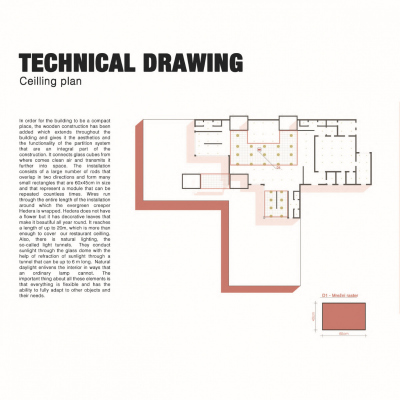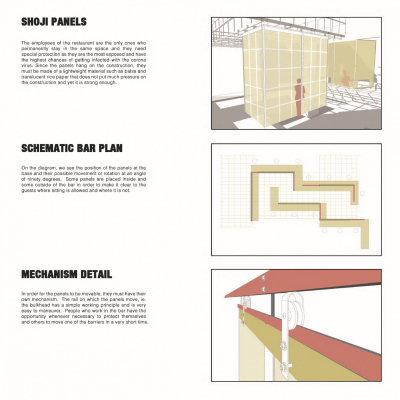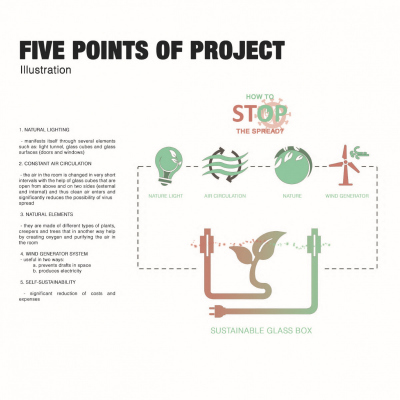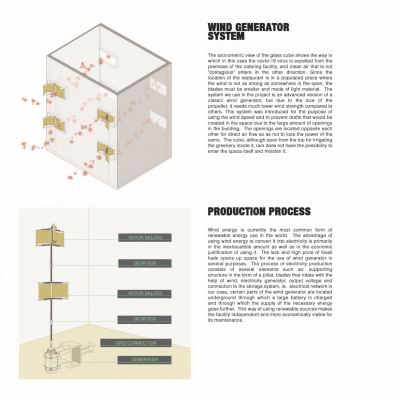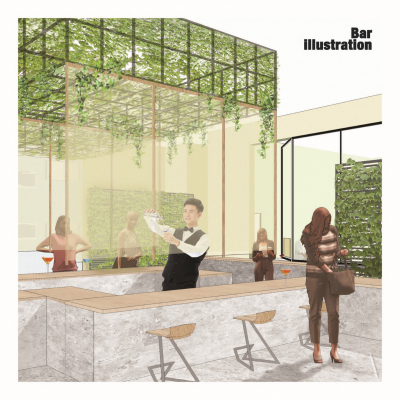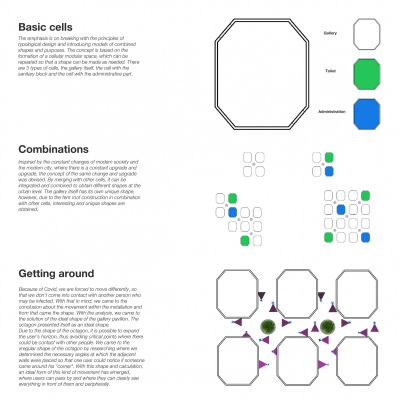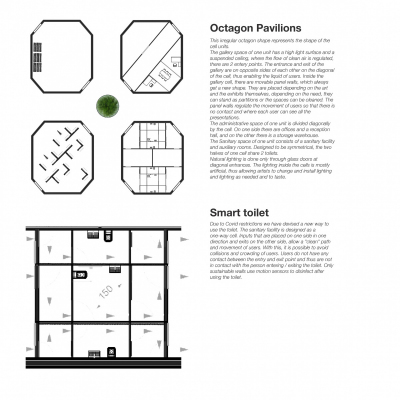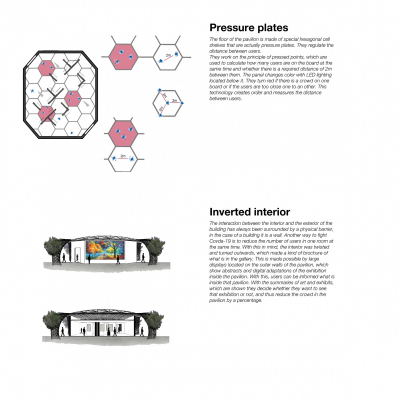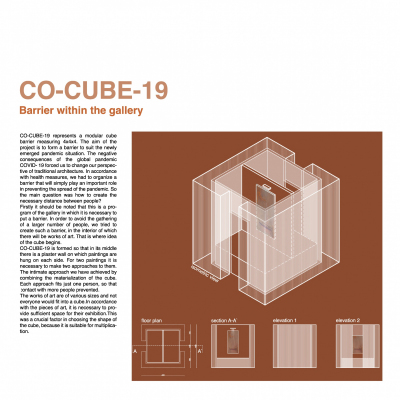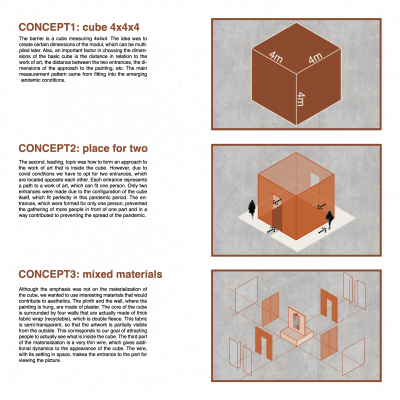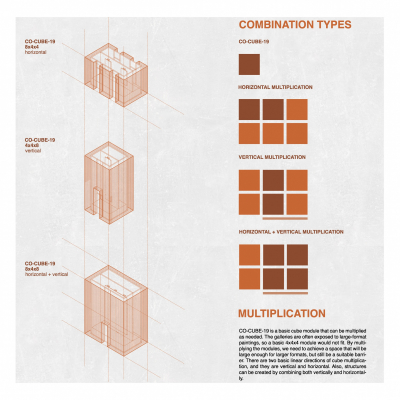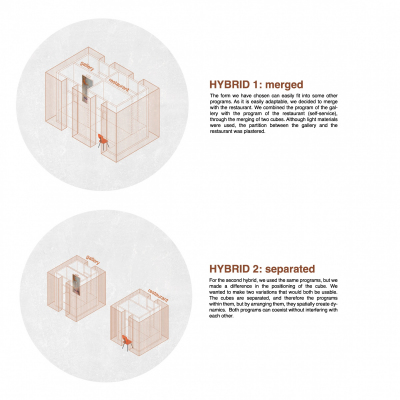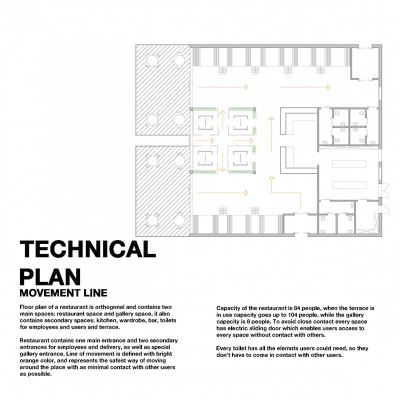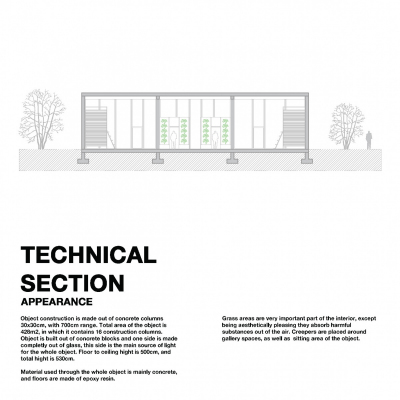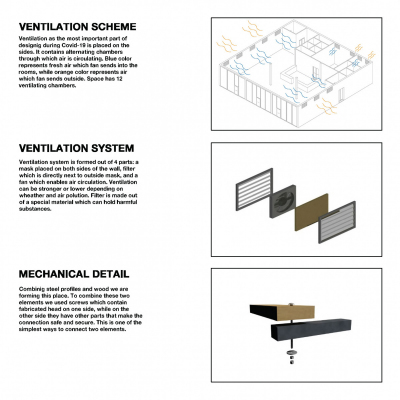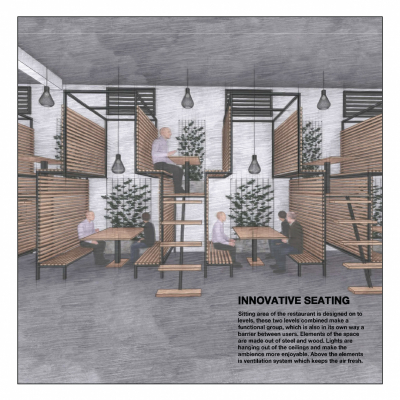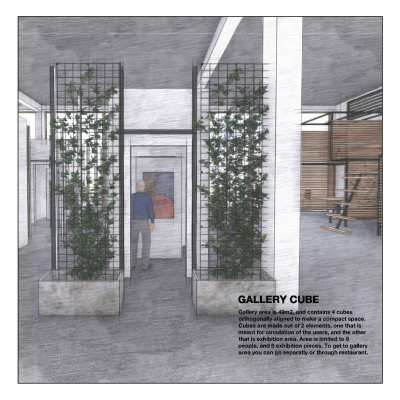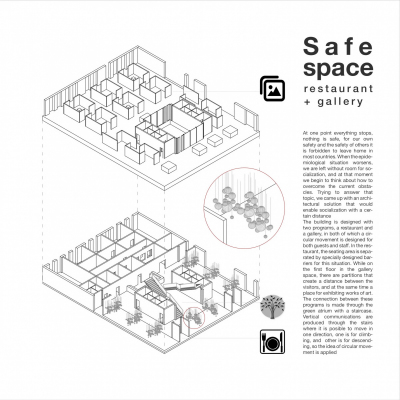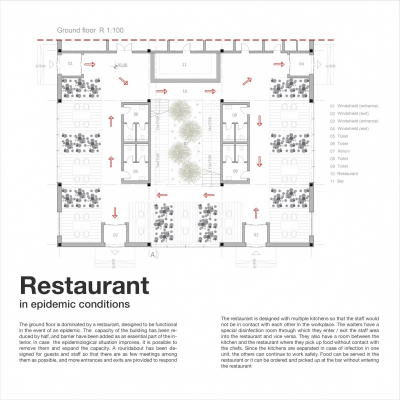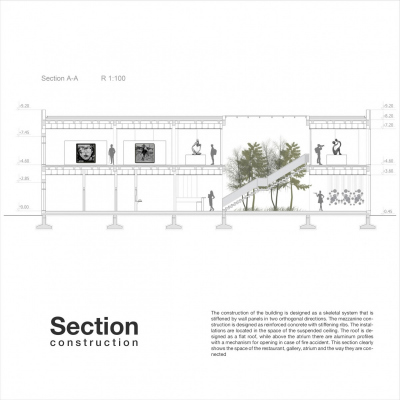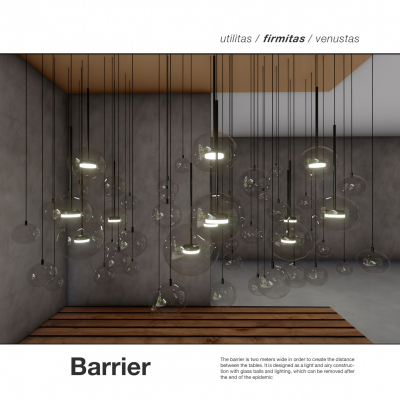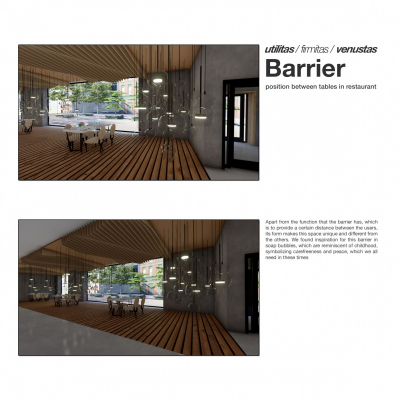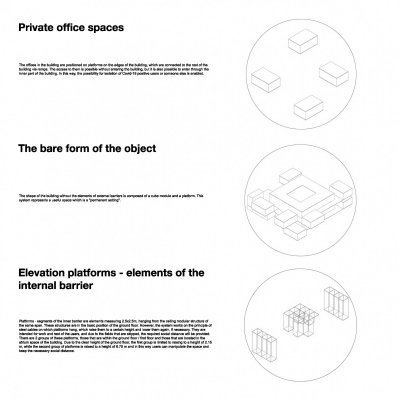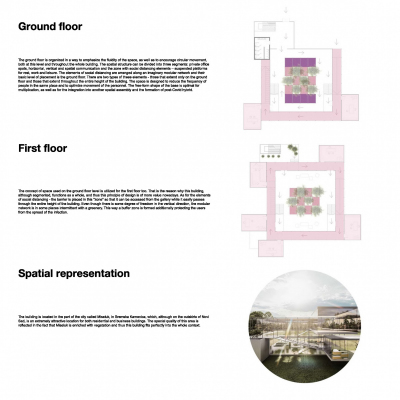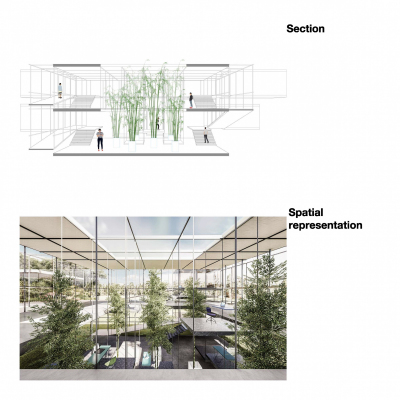IN SEARCH OF NEW COMFORT ARCHITECTURE: Architecture in pandemic conditions
STUDIO 01B AP-AP
IN SEARCH OF NEW COMFORT ARCHITECTURE: Architecture in pandemic conditions
STUDIO 01B AP-AP
Exhibition catalogue
Digital gallery of Kabinet 505, Faculty of Technical Sciences, University of Novi Sad
July 01 – July 20, 2021
ISBN 978-86-6022-334-2
INTRODUCTION:
Saša Medić
PhD, Assistant Professor, Department of Architecture and Urban Planning, Faculty of Technical Sciences, Novi Sad
EDITORS:
Jelena Atanacković Jeličić
PhD, Full Professor, Department of Architecture and Urban Planning, Faculty of Technical Sciences, Novi Sad
Dejan Ecet
PhD, Assistant Professor, Department of Architecture and Urban Planning, Faculty of Technical Sciences, Novi Sad
Petar Mirković
Visual artist, Guest Lecturer, Department of Architecture and Urban Planning, Faculty of Technical Sciences, Novi Sad
EXHIBITION CURATOR AND EXHIBITION DESIGN:
Petar Mirković
Visual artist, Guest Lecturer, Department of Architecture and Urban Planning, Faculty of Technical Sciences, Novi Sad
REVIEWS:
Marko Todorov
PhD, Associate Professor, Department of Architecture and Urban Planning, Faculty of Technical Sciences, Novi Sad
Radomir Kojić
PhD, Associate Professor, Department of Architecture and Urban Planning, Faculty of Technical Sciences, Novi Sad
CATALOGUE DESIGN:
Petar Mirković
Visual artist, Guest Lecturer, Department of Architecture and Urban Planning, Faculty of Technical Sciences, Novi Sad
PUBLISHER:
Department of Architecture and Urban Planning, Faculty of Technical Sciences, Novi Sad, Serbia
ONLINE CATALOGUE
AUTHORS:
Tijana Bilafer
Andrej Grković
Rada Klać
Andrijana Jovanović
Ivan Labović
Jelenko Lakić
Jelena Mirković
Marko Matković
Tamara Milutinović
Ivan Ostojić
Teodora Radanović
Milica Radovanović
Milica Rakočević
Miloš Raogan
Kristina Rubežić
Nikoleta Stamenković
Milica Spasojević
Aleksandar Todorović
Milica Ćetković
Mirjana Vulić
Introduction
The time of the COVID-19 pandemic, which we are all witnessing, has posed numerous challenges in all spheres of life, and the changes have been most obvious at the level of forced transformations of established lifestyles and everyday habits. The fact is that we have to accept changes, but the question is whether we can direct and shape them in order to retain to everything that makes us happy? Of course, the notion of happiness represents an entity that is relative and its interpretation is always individual; yet, the notion that is universal and that can certainly be related to the notion of happiness is human well-being. How can we preserve (or even improve) human well-being with all new restrictions due to the pandemic? The group of exhibits presented at the In Search Of New Comfort: Architecture in pandemic conditions exhibition strives towards offering answers to the question of shaping all the necessary transformations, with an exceptional commitment to preserving the aspects that, according to the authors, make a contemporary person happy.
The presented exhibits can be divided into three basic segments dealing with the consideration of challenges related to public spaces, commercial purposes, and housing. If the proposed solutions are carefully observed, it can be concluded that the idea of a city as a platform for artistic expression, and consequently a space of dialogue, tolerance and democracy, may not be as impossible as it seems at first glance. By accepting new restrictions and articulating spatial elements in such a way that the necessary physical distance does not imply social distance, the authors do not restrict freedom of space users, and they even go a step further – they invite them to exchange opinions and ideas.
Preserving the utilitarian nature of public and commercial spaces is also a topic whose significance was emphasized at the In Search Of New Comfort: Architecture in pandemic conditions exhibition. The fact is that the sphere of economy is globally affected by the COVID-19 pandemic, and architectural practice has tools that can significantly affect economic sustainability, which the authors successfully confirm with their research. The offered spatial solutions provide safe working environments, commercial facilities, and also hybrid facilities and combined purpose facilities. In addition to the safety of space users, the solutions proposed by the authors also aim at preserving socialization as one of the key elements of modern lifestyles.
If the exhibits related to the transformation of housing during the pandemic are analysed, it can be concluded that the authors have carefully considered primarily the concept of housing from the aspect of human habits and needs in the context of the 21st century. A special quality that can be noticed refers to the design of living spaces that enable their unhindered use in conditions when there is a demand for enhanced sanitary measures, though with providing the flexibility of spatial units. As in the case of public and commercial spaces presented at the exhibition, the authors dealing with the challenges related to residence also emphasize the importance of the social aspect, which is evidently one of the fundamental input factors in generating the proposed spatial solutions.
The In Search Of New Comfort: Architecture in pandemic conditions exhibition very directly indicates to the challenges that the COVID-19 pandemic has posed to modern society, and consequently to architectural practices whose actions have a great impact on the future of lifestyles. What can be singled out as the leitmotif of the In Search Of New Comfort: Architecture in pandemic conditions exhibition is the authors’ aspiration to preserve the hedonism of everyday life despite all the necessary restrictions. The notion of hedonism, like the already mentioned notion of happiness, is closely related to personal preferences; nevertheless, the presented group of exhibits displays a clear attitude that the preservation of interpersonal relations is a timeless precondition for the preservation of the future.
Saša Medić
PhD, Assistant Professor, Department of Architecture and Urban Planning, Faculty of Technical Sciences, Novi Sad
The unexpected challenges posed by the Covid-19 pandemic to global society during 2020 and 2021 will permanently and largely, as is quite certain now, change numerous aspects of everyday life. There is almost no area of human action that has not undergone changes in the way it functions, as well as certain adjustments to the new situation. In such a context, the attitude towards personal and public space and objects has been radically modified. Restrictions in public life have been compensated by the reorganization of private life and personal space. Walter Benjamin recognized the essence of modern interior in the distinction between private and work space, as well as in the need for an individual in a private space to isolate themselves in their own version of reality. Such a paradigm has been overcome today, in the context of modern means of communication, and every form of isolation has become impossible, while the conditions of social distancing have reminded us that the distinction between the private and the public in the modern context has been surpassed and unsustainable. For the majority of the population, living space has become, during the previous year, a working space as well, while socialization has transferred significantly from a predominantly physical to a virtual form.
The architectural solutions presented at the In Search Of New Comfort: Architecture in pandemic conditions exhibition offer the response of the Master students of architecture from the Department of Architecture and Urbanism, Faculty of Technical Sciences, to such a new reality, and reflect the newly built relationship towards private and public, as well as physical and virtual, space. At the core of each presented solution is a re-examination of architectural programs, especially those whose patterns are most shaken by the pandemic – housing, business, culture and trade. By reviewing and skilful combining these programs, the displayed solutions have been created. Through the exhibits, the In Search Of New Comfort: Architecture in pandemic conditions exhibition reminds us that architecture is firmly and inextricably linked to the society that is constantly changing, and that the only correct starting point for architectural design is re-examination, and not the adoption and repetition of set patterns.
Marko Todorov
PhD, Associate Professor, Department of Architecture and Urban Planning, Faculty of Technical Sciences, Novi Sad
The Covid -19 virus pandemic has affected all spheres of society globally over the past fourteen months, changing, among other, the way designers will, today as well as in the future, address issues of the relationship between private and public spaces. In the light of this new situation, the designer is faced with a series of challenges, and the solution demands for the reconsideration in the established practice of designing architectural programs that are most affected by the pandemic: housing, business and culture.
The In Search Of New Comfort: Architecture in pandemic conditions exhibition by Master students of architecture from the Department of Architecture and Urbanism, Faculty of Technical Sciences, deals with these issues in a very professional and witty manner. With their architectural solutions, students offer answers to the question of merging living and working spaces, private and public, constantly re-examining and combining seemingly incompatible programs into harmonious unities. This approach has enabled them to shift the focus of their architectural solutions to the end user of these spaces and to help them in the best possible manner to overcome the new situation of living and working in a pandemic.
Radomir Kojić
PhD, Associate Professor, Department of Architecture and Urban Planning, Faculty of Technical Sciences, Novi Sad
Ovde možete preuzeti katalog u PDF formatu:
IN SEARCH OF NEW COMFORT ARCHITECTURE: Architecture in pandemic conditions.pdf
